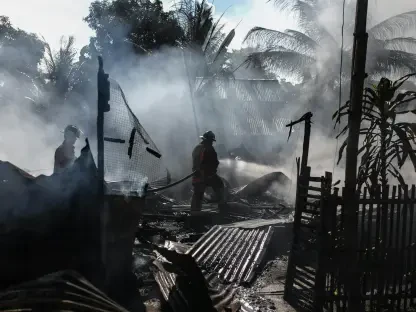The mining industry, long accustomed to viewing cybersecurity as a strictly IT issue, is beginning to confront the serious vulnerabilities within its operational technology (OT) systems. Despite these growing concerns, many industry leaders still remain hesitant to allocate resources and attention to OT security. This division between IT and OT security is problematic since cyberattacks on OT systems can lead to severe operational halts, plummeting productivity, and immense financial losses. More alarmingly, these disruptions can also pose significant safety risks and tarnish a company’s reputation, leading to a stark drop in investor confidence.
Integrating IT and OT Management
The Segregation Dilemma
Traditionally, IT and OT roles in the mining sector exist as separate entities, despite their shared technological basis. This segregation often results in disjointed efforts to secure the full breadth of an operation’s technological assets. One proposed solution is to consolidate both IT and OT management under the Chief Information Officer (CIO), promoting unified and streamlined operations. This arrangement can pave the way for regular communication and collaborative efforts between the two teams. It’s crucial for these groups to maintain a comprehensive perspective in understanding the cascading effects system downtimes can have on overall business continuity.
Efforts to integrate IT and OT management should prioritize establishing regular channels of communication and cooperative projects that shed light on their interdependencies. This interconnected approach allows both teams to develop a unified strategy for addressing potential cyber threats, ensuring that each group understands the broader organizational impacts of any downtime. Regular collaborative exercises, such as joint training sessions and coordinated response drills, can forge a stronger bond between IT and OT teams while enhancing their collective ability to quickly mitigate threats.
Routine Maintenance and Compliance Checks
Similar to routine safety drills conducted in mines, regular maintenance and compliance checks are essential to protect OT systems. These preventive measures ensure that the technology remains resilient against potential cyberattacks. Operators should be acutely aware of the broader implications of system downtimes, necessitating a clear understanding of the dependency between IT and OT systems to preemptively prevent critical operational disruptions. In this light, regular audits and cybersecurity assessments should be conducted to identify and address vulnerabilities in both IT and OT architectures.
Moreover, these measures should not be perceived as sporadic tasks but rather as ongoing responsibilities ingrained within the daily operations of a mining company. Continuous monitoring and logging activities serve as essential tools in detecting anomalies and preemptively identifying potential threats. By embedding these practices into routine procedures, mining companies can ensure their defenses remain adaptive and robust in the face of ever-evolving cyber dangers. Furthermore, engaging all levels of personnel in understanding the importance of these practices fosters a culture of vigilance and proactive defense against cyber threats.
Recognizing the Importance of OT Cybersecurity
Budget Allocations and Executive Awareness
One critical aspect of bolstering OT cybersecurity lies in recognizing the financial importance of defense measures, thereby justifying appropriate budget allocations. By making C-level executives and board members aware of the ongoing cyber risks that extend beyond the IT department, companies can embed information security as a core business objective. This awareness not only ensures that cybersecurity is regularly discussed in board meetings but also guarantees that sufficient resources are allocated for both IT and OT protection. Convincing the top brass of the direct and indirect costs associated with cybersecurity incidents can drive more robust funding and resulting defense strategies.
To effectively communicate these risks, executives need to be presented with data and case studies illustrating the severe consequences of neglecting OT security. Highlighting incidents where cyberattacks have led to significant operational losses or safety breaches can provide a compelling argument for enhanced funding. Additionally, fostering a transparent environment where cybersecurity updates and potential vulnerabilities are openly discussed can elevate the importance of these issues within the company’s strategic priorities.
Incident Response Strategies
Implementing a comprehensive incident response plan is an indispensable strategy to mitigate the damage of any potential cyberattacks. Such a plan should encompass detailed scenario planning for breaches, prioritization of critical systems, and rapid containment and restoration efforts. Cleanroom technology, which ensures restored data is uncontaminated before reintegration into the production environment, is a recommended approach to secure the recovery process. These measures work in harmony to minimize downtime and ensure that operations can resume quickly without risking further contamination or exposure.
An effective incident response strategy must also incorporate regular training and drills to prepare teams for real-world scenarios. By simulating both minor and major cyber incidents, personnel can practice their roles and refine their response procedures to ensure efficiency and effectiveness during actual events. Clear communication channels and predefined roles are vital components of any incident response plan to guarantee swift actions and cohesive efforts across departments.
Engaging with Data Management Experts
Specialized Expertise for OT Security
Despite the advanced technical skills present within mining companies, the primary focus remains on mineral extraction rather than comprehensive data management and protection. Thus, collaborating with specialists in data management and cybersecurity can offer significant advantages. These professionals possess the requisite expertise to design and implement robust incident response plans, secure OT environments, and provide ongoing support. Engaging with these experts allows mining companies to concentrate on their core activities while ensuring that their OT systems remain safeguarded against evolving cyber threats.
Specialized experts offer insights and solutions custom-tailored to the unique challenges faced by the mining industry. They can conduct thorough risk assessments, develop targeted security measures, and provide continuous monitoring services to detect and respond to threats in real time. Their involvement also ensures that the latest cybersecurity technologies and best practices are integrated into the company’s defense strategies, keeping the organization ahead of potential attackers.
Concluding Thoughts
The mining industry, historically treating cybersecurity as purely an IT concern, is now starting to address the serious vulnerabilities in its operational technology (OT) systems. Despite the rising awareness, many industry leaders are still reluctant to invest the necessary resources and focus on OT security. This separation between IT and OT security poses significant problems, as cyberattacks targeting OT systems can cause disastrous operational interruptions, severely affect productivity, and result in massive financial losses. Even more troubling, these disruptions can introduce serious safety issues and damage a company’s reputation, causing a sharp decline in investor trust and confidence. The need for integrated IT and OT security measures is becoming increasingly critical. By ignoring OT security, the mining industry risks not only financial instability but also the safety of its workforce and the trust of its stakeholders. In response, companies must bridge the gap between IT and OT security to protect their operations, maintain productivity, and uphold investor confidence.









